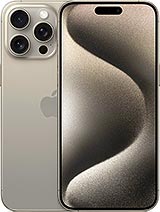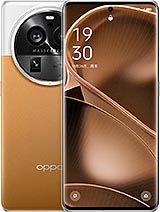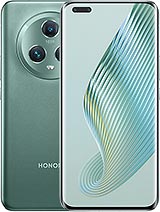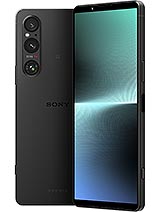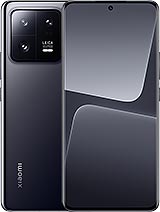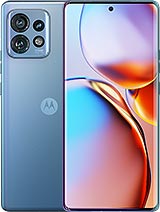Google Pixel 8 Pro review
6.7-inch Super Actua display is super-bright, actually
Among the key developments on this year's Pixel phones are the new displays, and the one on the Pro is particularly great. Dubbed Super Actua, the Pixel 8 Pro's panel boasts crazy high peak brightness - up to 2,400nits. The 6.7-inch LTPO OLED screen has a somewhat unusual resolution of 1,344x2,992px (for a pixel density of 489ppi), a maximum refresh rate of 120Hz (adaptive all the way down to 1Hz), and support for HDR10+ (but no Dolby Vision).
In our testing, the Pixel 8 Pro was good for 1,600nits flat in adaptive brightness mode - some 200nits short of the iPhone 15 Pro (Max) result but brighter than anything else currently on the market we've tested - quite the feat. More impressive still was just how much brightness the phone allows you to get in manual mode - the 954nits we measured was 100 more than what the Pro iPhones or the Galaxy S23 Ultra would give you. The small Pixel was good for a whole grand, but we're pretty happy with 954 on the Pro.
Color accuracy
Color reproduction is handled in the usual straightforward manner on the Pixel 8 Pro - you get just 2 modes with no extra sliders or color wheels. The default Adaptive mode delivers a more vivid output and respectable, though not class-leading, accuracy for our DCI-P3 color swatches.
The Natural mode, on the other hand, is properly excellently tuned for sRGB content, though conversely, it's less appealing in terms of pop. In either mode, there was no major color shift, so the absence of temperature adjustment capability isn't really an issue.
Refresh rate
Similarly simple from a user settings perspective is the Pixel 8 Pro's refresh rate handling - there's just a 'Smooth display' toggle in the display menu that enables the 120Hz maximum. Whether you turn it on or not, the phone will still actively vary its refresh rate all the way down to 1Hz; it's just that the ceiling will be 60Hz when Smooth display is disabled.
Indeed, the Pixel will be happy to dial down to 1Hz almost immediately after it stops registering touch input, when brightness is set to 20% or higher. For dimmer brightness settings, it will go down to 10Hz when idling.
The phone doesn't appear to be using 24Hz or 48Hz modes when playing back videos shot at those frame rates - or at least it doesn't report them, instead maintaining 60Hz, as per the built-in Android utility. If you have active moving content in a browser, the phone will maintain 120Hz (or 60Hz, if you've disabled Smooth display), but will still dial down to 1Hz for static content and no touch input. Smooth display is also there for you in games that support high frame rates.
Streaming and HDR
The Pixel 8 Pro supports HDR10 and HDR10+ but no Dolby Vision. We got HDR streams from YouTube and Netflix, with the latter serving FullHD resolution. It's nice that when your HDR video is playing in a window, only that window gets the brightness boost and not the entire screen.
Somewhat related, the Pixel 8 phones will now boost highlights when displaying images in the Photos app if those images contain metadata to enable it - OLED iPhones have been doing it for a while, and it's now made it to the Pixels, with other Androids to follow in the next year.
Google Pixel 8 Pro battery life
The Pixel 8 Pro is powered by a 5,050mAh battery - precisely a 1% increase in the nominal capacity over the previous generation's power pack. The inconsequential non-upgrade aside, the Pixel 8 Pro is about as equipped as the rest of the high-end devices in the Android space.
The phone's Active Use results aren't quite up to the competition's standard, with both the Galaxy S23 Ultra and the iPhone 15 Pro Max posting higher numbers, quite significantly so in the iPhone's case. You also don't stand to gain extra longevity compared to the small Pixel 8.
Expand to reveal our legacy battery test (Endurance rating). How we test now.
In our testing, the Pixel 8 Pro recorded higher numbers than the previous generation across the board, but not quite as high as to challenge major competitors. We clocked 16:25h on our Wi-Fi web browsing test and 19:33h when looping videos offline - not bad results, actually. The voice call and standby figures were less exciting, and those were what ultimately brought down the Pixel's overall Endurance rating to 90h.
Our battery tests were automated thanks to SmartViser, using its viSerDevice app. The endurance rating denotes how long the battery charge will last you if you use the device for an hour of telephony, web browsing, and video playback daily. More details can be found here.
Video test carried out in 60Hz refresh rate mode. Web browsing test done at the display's highest refresh rate whenever possible. Refer to the respective reviews for specifics. To adjust the endurance rating formula to match your own usage - check out our all-time battery test results chart.
Charging speed
One area where Pixels haven't been getting praise is charging speed - or, rather, we've been complaining every single time how slow they charge. While hardly gamechanging, the Pixel 8 Pro's results we got are a welcome step in the right direction.
Using Google's official 30W charger (but any good modern USB Power Delivery brick rated for that or higher should do just fine), we clocked a full charge from flat to require 1:23h on the Pixel 8 Pro - nearly a half-hour improvement over the admittedly glacial Pixel 7 Pro. The iPhone 15 Pro Max is also pretty slow in this exercise, but even the Galaxy S23 Ultra's not particularly quick one-hour figure is notably better. Similarly, at the 30-minute mark, we're seeing an improvement over the previous generation, but not really a truly competitive result from the Pixel.
The Pixel 8 Pro supports wireless charging at up to 23W when using the proprietary Pixel Stand or up to 12W for generic Qi-compliant charging pads (that adhere to the Extended Power Profile spec). Oddly enough, there's still no certification entry for the Pixel 8 phones in the Wireless Power Consortium's database.
Speaker test
The Pixel 8 Pro has the usual hybrid stereo speaker setup with a 'main' unit firing out of the bottom of the phone and the earpiece acting as the second channel. The top speaker is assigned the left channel in portrait, while in landscape, the channels will be adjusted to match the actual orientation. Regardless of orientation, each speaker will also output the other channel's track as well, albeit at an attenuated level.
![]()
![]()
Bottom speaker • Top speaker/earpiece
In our test, the Pixel 8 Pro posted a 'Good' score for loudness, a notch below the Pixel 8, as well as the Pixel 7 Pro, and pretty much every competitor out there. While that might sound like grounds for concern, the way the phone actually sounds quickly puts those to rest. It puts out a more balanced sound than the old model, has some good thump in the low end, clear vocals, and well defined treble - perhaps the iPhone 15 Pro Max is still a touch better overall, but the Pixel is easily a great choice if you value speakers a lot.
Use the Playback controls to listen to the phone sample recordings (best use headphones). We measure the average loudness of the speakers in LUFS. A lower absolute value means a louder sound. A look at the frequency response chart will tell you how far off the ideal "0db" flat line is the reproduction of the bass, treble, and mid frequencies. You can add more phones to compare how they differ. The scores and ratings are not comparable with our older loudspeaker test. Learn more about how we test here.
Reader comments
- Anonymous
- 19 Mar 2025
- X{v
Pixel 8pro or Samsung Galaxy s23 Ultra which better??
- Ryan47
- 12 Mar 2025
- 0F0
My pixel 8 pro runs fantastic I love the haptics.Purchased for 350 new from Argos 128gb model and running android 16 beta 2 it's brilliant and functioning perfectly.Battery Life is good for me six hours screen time a day and the camera is amazin...
